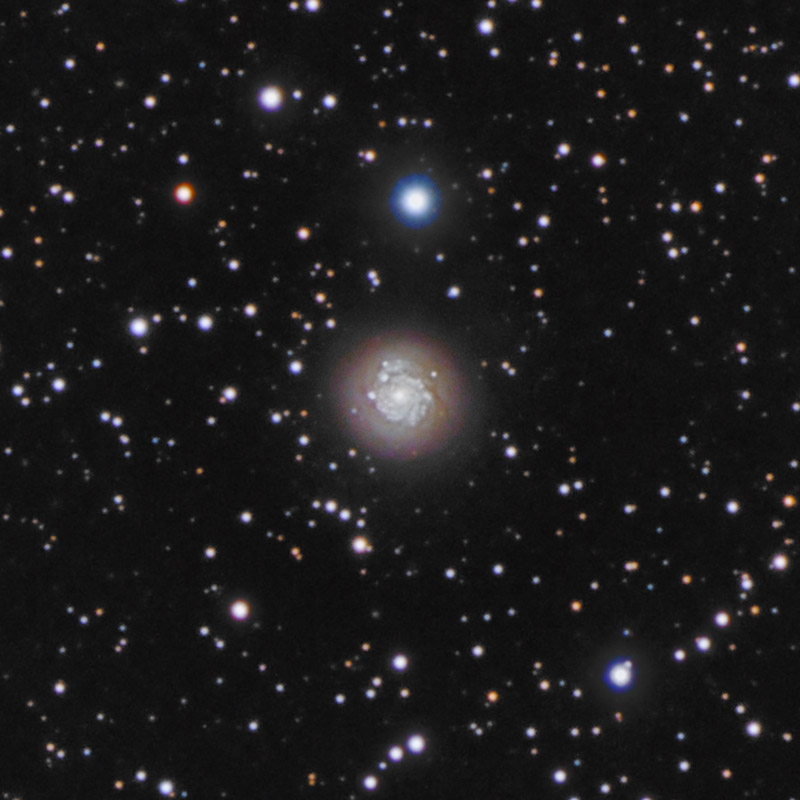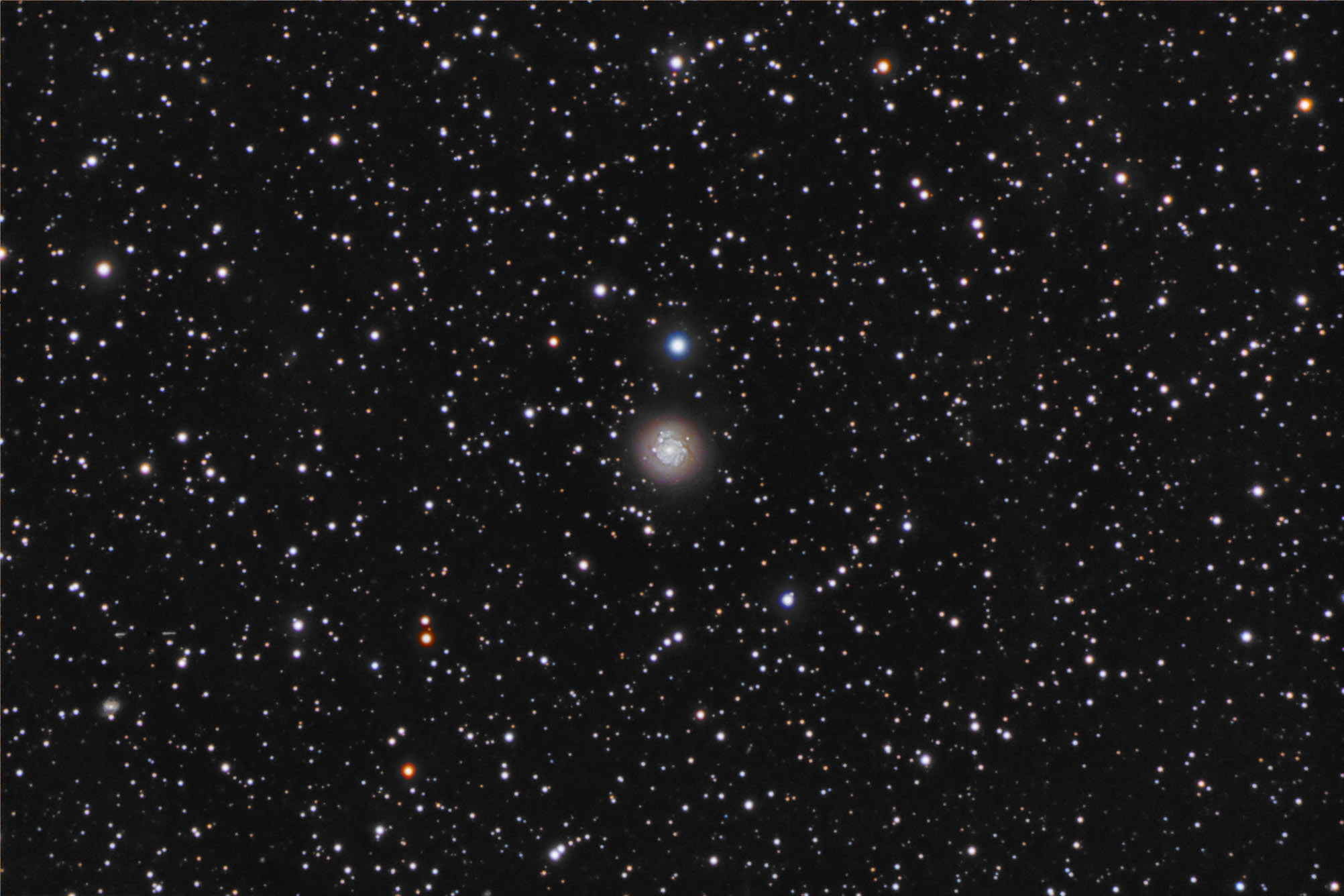| Description | Images |
Object name: NGC0278Designation(s): NGC0278, NGC 278 is a brilliant, face on, somewhat flocculent spiral in southern Cassiopeia about 6.5 degrees north of M31. That's about all I can find on it that astronomers agree upon. Distance estimates range from 14.8 to 38.5 million light-years. Some, including NED and the NGC project, classify it as a barred spiral SAB(rs)b. Yet others say it is just Sb adding: "Both optical and near-IR images indicate that this SAB galaxy is not actually barred." Others point to the spiral structure being traced to within 2" of the core which is either a point source or a 2" diffuse disk depending on which paper you read. There's little agreement on anything about this galaxy it seems. The spiral structure while of high surface brightness (unusually high in fact) has a very muted fuzzy look to it. I get the feeling I'm looking at it through a thick fog. The spiral structure is surrounded by a diffuse reddish disk. Or is it a sphere and this is what is creating the "foggy" look? Since there's a dark band separating the bright inner spiral structure from the outer red diffuse area and the features of the is dark band extend into the red, featureless area I'm not sure if the sphere idea works. I did a lot of pushing to get the spiral structure to show. Still, there's a foggy look to the galaxy to my eye. Processing the very bright spiral disk and the faint outer disk makes this one rather a challenge as the brightness range is unusually high. While I call the galaxy flocculent, unlike a typical flocculent galaxy the arm segments are organized into easy to follow arms, it's just that these arms are made up of many short segments. Related Designation(s):2MASS J00520436+4733014, 2MASX J00520430+4733019, 2MASXi J0052044+473302, 87GB 004913.7+471655, 87GB[BWE91] 0049+4716, AKARI J0052043+473259, CGCG 0049.2+4717, CGCG 550-016, GB6 J0052+4733, IRAS 00492+4716, IRAS F00492+4716, MCG +08-02-016, NGC 0278, NGC0278, NVSS J005204+473304, PGC 003051, UGC 00528, UZC J005204.3+473302, [BTW2003] J0052+4733, |

